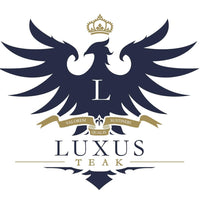14 March, 2023
Posted by
Rowan Grey
Beware of imitations!
Teak is highly valued worldwide for its diverse uses. Its resistance to moisture and rot makes it a popular material, especially for outdoor use. Teak is used for decking, yacht flooring, and deck chairs, among other things, which must withstand the elements. Although plantation-grown teak is a more affordable, sustainable, and accessible option than reclaimed teak from endangered Southeast Asian forests, there are some wood projects that can utilize another form of hardwood instead of teak. These alternative hardwoods have distinct advantages and disadvantages, and only an experienced wood professional can determine whether one of them is truly suitable for a project that requires teak's unique properties.
Shorea
From the contested rainforests of Southeast Asia comes the closest alternative to teak: Shorea. This particular tropical hardwood has a similar weight and hardness to teak, and a comparable density. It has a close grain and is suitable for detailed carving. Thanks to its high oil content, it is largely resistant to rot and insect infestation. When fresh, Shorea has a slightly golden hue, which can be maintained with a quick varnish. If left untreated, the color fades over time to a silvery gray, not unlike that of older teak.
Despite its many similarities to the more expensive wood, Shorea is more affordable than teak due to the simple laws of supply and demand. Despite increasing demand from buyers seeking viable alternatives to teak, Shorea plantations can supply sufficient quantities of wood to meet their needs.
Unlike its more expensive counterpart, Shorea wood has long been subject to stricter harvesting regulations, ensuring adequate protection for Shorea stocks in Southeast Asia. Until investors provide the capital needed to expand teak plantations as widely as Shorea, the alternative hardwood's greatest advantage lies in its availability.
From the contested rainforests of Southeast Asia comes the closest alternative to teak: Shorea. This particular tropical hardwood has a similar weight and hardness to teak, and a comparable density. It has a close grain and is suitable for detailed carving. Thanks to its high oil content, it is largely resistant to rot and insect infestation. When fresh, Shorea has a slightly golden hue, which can be maintained with a quick varnish. If left untreated, the color fades over time to a silvery gray, not unlike that of older teak.
Despite its many similarities to the more expensive wood, Shorea is more affordable than teak due to the simple laws of supply and demand. Despite increasing demand from buyers seeking viable alternatives to teak, Shorea plantations can supply sufficient quantities of wood to meet their needs.
Unlike its more expensive counterpart, Shorea wood has long been subject to stricter harvesting regulations, ensuring adequate protection for Shorea stocks in Southeast Asia. Until investors provide the capital needed to expand teak plantations as widely as Shorea, the alternative hardwood's greatest advantage lies in its availability.
Iroko
Iroko, also known as "African teak" or kambala, is an extremely tough hardwood from West Africa, sometimes referred to as "poor man's teak." It has similar properties, including strength, hardness, and durability. Iroko typically grows up to 150 feet tall and has a diameter of 7 feet, allowing for a large amount of wood to be harvested. While iroko is less pliable than teak, for most outdoor applications this characteristic can be neglected. Iroko is a mineral-rich wood and therefore abrasive to cutting tools, but with the right equipment this shortcoming can be compensated for.
With its medium-brown heartwood, lighter sapwood, and wavy grain, iroko looks different from teak. It can be polished to a high gloss, which enhances its warm golden brown hue. Although iroko is not yet widely used in marine applications, its price—about a third of that of teak—makes it an attractive alternative to consider.
Please keep these points in mind when looking at cheaper offers online that claim to be made of teak, as there are many horror stories from customers who have received an inferior product. At Luxus, we specialize exclusively in high-quality teak furniture.
Iroko, also known as "African teak" or kambala, is an extremely tough hardwood from West Africa, sometimes referred to as "poor man's teak." It has similar properties, including strength, hardness, and durability. Iroko typically grows up to 150 feet tall and has a diameter of 7 feet, allowing for a large amount of wood to be harvested. While iroko is less pliable than teak, for most outdoor applications this characteristic can be neglected. Iroko is a mineral-rich wood and therefore abrasive to cutting tools, but with the right equipment this shortcoming can be compensated for.
With its medium-brown heartwood, lighter sapwood, and wavy grain, iroko looks different from teak. It can be polished to a high gloss, which enhances its warm golden brown hue. Although iroko is not yet widely used in marine applications, its price—about a third of that of teak—makes it an attractive alternative to consider.
Please keep these points in mind when looking at cheaper offers online that claim to be made of teak, as there are many horror stories from customers who have received an inferior product. At Luxus, we specialize exclusively in high-quality teak furniture.





